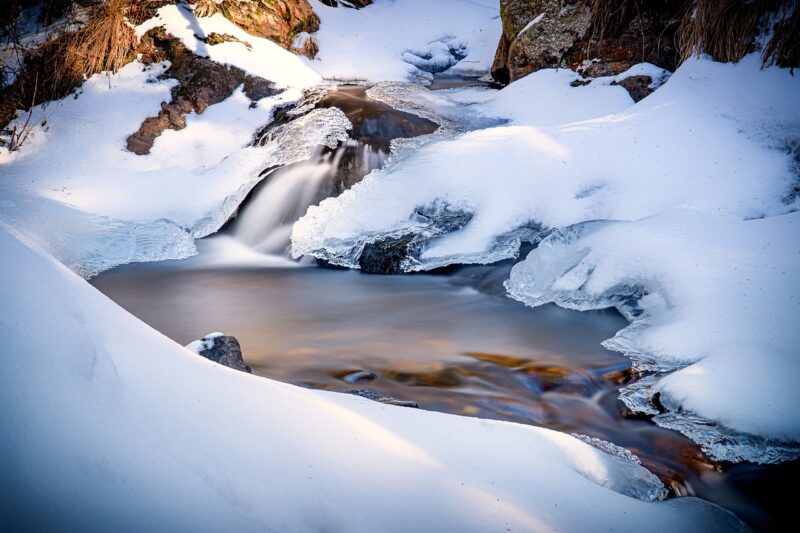
The Ice Age represents a fascinating period of Earth’s history, spanning roughly from 2.4 million years ago until about 11,700 years ago. During this era, significant climatic changes created vast expanses of frozen tundras, interspersed with lush forests and grasslands. Amidst this dramatic backdrop, a host of formidable predators emerged, showcasing an incredible adaptation to harsh environments. This article delves into the top hunters of the Ice Age, exploring their biology, hunting strategies, and how they became masters of survival.
1. The Saber-Toothed Cat: Apex Predator of the Pleistocene
One of the most iconic figures of the Ice Age, the saber-toothed cat, or Smilodon, has captured the imagination of scientists and enthusiasts alike. With its massive, elongated canine teeth, the saber-toothed cat was perfectly adapted for hunting large herbivores like woolly mammoths and bison.
- Anatomy and Adaptations: Weighing between 350 to 620 pounds, Smilodon had a powerful build, with short limbs designed for strength rather than speed. Its large, curved canine teeth could reach lengths of over 7 inches, allowing it to deliver a lethal bite to its prey.
- Hunting Strategies: Unlike modern big cats that rely on speed and stealth, saber-toothed cats were ambush hunters. They would often lurk in the underbrush, waiting for the right moment to pounce on unsuspecting prey.
- Social Behavior: Evidence suggests that Smilodon may have hunted in packs, allowing them to take down larger prey more efficiently. This social hunting strategy is hypothesized based on fossil findings that indicate multiple individuals were present during the same kill site.
2. The Woolly Mammoth: Not Just a Prey but a Competitor
Though primarily recognized as an iconic prey species, the woolly mammoth (Mammuthus primigenius) played a pivotal role in the hunter-prey dynamic of the Ice Age. This massive herbivore, closely related to modern elephants, was a formidable competitor for territory and resources.
- Size and Strength: Woolly mammoths stood up to 13 feet tall and weighed as much as 6 tons, making them challenging targets for predators. Their long, curved tusks could be used for defense against hungry hunters like saber-toothed cats and dire wolves.
- Adaptations for Survival: Adapted to cold climates, these mammals had a thick coat of fur and a layer of fat insulation. Their herd behavior also provided protection against predators, allowing young and weaker individuals to survive longer.
- The Role of Mammoths in the Ecosystem: Mammoths were not just prey; they also shaped their environment. By grazing on grassland, they helped maintain the tundra ecosystem, influencing the vegetation available to other herbivores and, subsequently, the predators that hunted them.
3. The Dire Wolf: The Pack Hunter
Often overshadowed by its more famous cousin, the gray wolf, the dire wolf (Canis dirus) was a highly effective predator during the Ice Age. These creatures were built for endurance and teamwork, essential traits in the hunting strategy of Ice Age pack dynamics.
- Physical Characteristics: Dire wolves were larger than modern gray wolves, with a more robust build and larger teeth designed for crushing bones and tearing through tough hide. Weighing between 110 and 200 pounds, their strength complemented their social structures.
- Hunting in Packs: The dire wolf’s social behavior allowed them to efficiently hunt mega-herbivores like mammoths and bison. Evidence from fossilized remains indicates they would coordinate to bring down larger prey through teamwork.
- Impact of Climate Change: As the Ice Age ended and temperatures rose, dire wolves faced increased competition from the expanding populations of early humans and other predators. Their inability to adapt quickly to these changes ultimately contributed to their extinction about 10,000 years ago.
4. The Cave Lion: King of the Tundras
The cave lion (Panthera leo spelaea) roamed across Europe, Asia, and North America during the last Ice Age, earning a reputation as one of the most powerful predators of its time. These majestic felines showcased unique adaptations tailored for survival in freezing conditions.
- Size and Hunting Skills: Cave lions were nearly as large as modern-day Siberian tigers, reaching up to 5 feet at the shoulder. Their strength allowed them to take down large prey, primarily targeting young and weaker individuals from herds.
- Behavior and Social Structure: Unlike their modern counterparts, cave lions likely exhibited social behavior similar to hyenas, hunting in small groups or alone, which allowed them to tackle a range of prey sizes.
- Cultural Significance: The cave lion holds a prominent place in human history, appearing in numerous artworks found in caves throughout Europe, hinting at its coexistence with early humans and possibly influencing mythology and culture.
5. The Short-Faced Bear: The Giant of the Ice Age
Among the largest bear species to have ever existed, the short-faced bear (Arctodus simus) thrived across North America during the Ice Age. Known for its incredible size and speed, this bear was a unique predator in its environment.
- Physique and Speed: The short-faced bear could stand as tall as 12 feet on its hind legs, weighing around 1,500 pounds. Its long legs and light stature enabled it to run quickly, allowing it to chase down prey and scavenge effectively.
- Ecological Role: This bear was not solely a predator; it played a dual role as both predator and scavenger. Capable of overpowering smaller carnivores, it had the advantage of scavenging from their kills if needed.
- Impact of Climate Change: Extinct by the end of the Ice Age, the short-faced bear lost its predominant niche as the climate transformed. Their reliance on large prey and ecological dynamics with shifting habitats played significant roles in their demise.
Conclusion: Masters of Survival in a Changing World
The Ice Age predators were remarkable in their adaptations, showcasing the incredible diversity of life that once ruled the frozen tundras. Each predator, from the saber-toothed cat to the short-faced bear, played a critical role in their ecosystems. Understanding these magnificent creatures provides insights into how species adapt, survive, and ultimately succumb to the harsh realities of changing climates.
As we reflect on the Ice Age’s apex predators, we appreciate the remarkable complexity of life on Earth and how lessons from the past can inform our understanding of the future. In an era where modern predators face their challenges, the spirits of these Ice Age giants remind us of nature’s resilience and the intricate web of existence worldwide.







